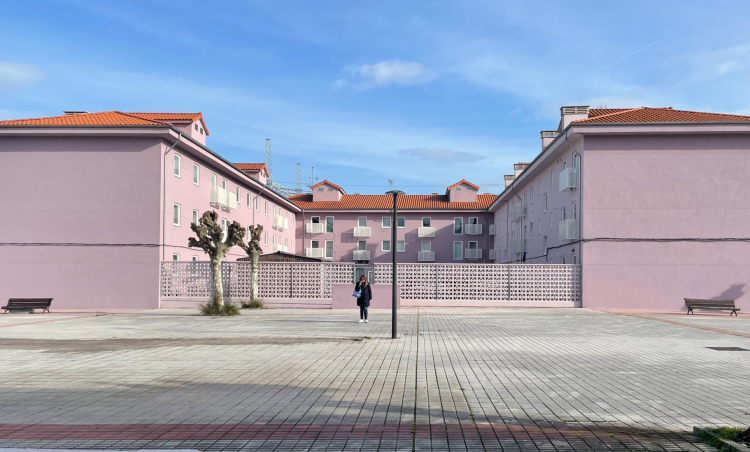The renovation process can be expensive, not only in terms of money but also for the residents’ comfort. Nevertheless, the effectiveness is undeniable. Moreover, managing to mobilise the necessary resources can prove to be even more difficult in the sector of social housing, where the financial investment is carried by the provider while either rent remains untouched or a slight increase must result in additional energy savings for the household. But not all is dark and gloomy. If we look around different countries in Europe, there are plenty of good practices that can serve as inspiration, especially in the ongoing energy crisis that all of Europe is experiencing. The comprehensive renovation of the San José Neighbourhood in Lada, in the Asturias region of Spain, is such an example.
The Lada neighbourhood, built in the ‘60s, is one of the oldest in the Asturian public housing stock. With a predominantly elderly population, energy efficiency, as well as accessibility, were two main concerns. VIPASA, the public company that manages public and social dwellings in Asturias, developed a monitoring study of hygrothermal and energy parameters in nine dwellings in the neighbourhood of Lada. The findings convinced the government to allocate the required funding. After the renovation, besides the fixing of the obvious problems – wet walls, damaged windows, or the use of a mix of heating systems through carbon and gas – the quality of life increased noticeably.
To understand the impact of this project, let us have a look at some concrete figures. Three different dwellings were studied, in three different periods of the year. In two of the cases, electricity was the main source of heating, while in the third one it was supplemented by gas. No matter the period, the difference in consumption was of at least 50% less. If we take the period December 2020-February 2021, a period when tough lockdowns were in place and households were spending the whole day at home, and the same one a year later after the renovation, we can see the consumption decreasing from 1.310 kWh to 594 kWh for an individual dwelling. The difference is even more striking when we take into account the fact that this was one of the peaks of the COVID-19 pandemic, so many residents spent more time at home than usual. The monitoring that took place during the warm season is also significant. Comparing the May-August period from 2021 and 2022, we can see the individual consumption of a dwelling decrease from 1.319,5 kWh to 671 kWh.
Once the refurbishment works have been completed, the lighting and heating systems continue to be individual and the hot water generation system is carried out by means of a community fan heater. The recorded expenses show how, despite the increase in gas and electricity prices, the impact has been compensated through the reduction in consumption. This happened despite the inclusion of new systems such as controlled mechanical ventilation that improves the comfort in the dwellings.
This renovation project is just one concrete proof that this solution works. If you want to hear more successful and inspiring stories that we could learn from in these challenging times, read about our two-day Renovation Summit which took place on the 16th and 17th of November in Brussels.
